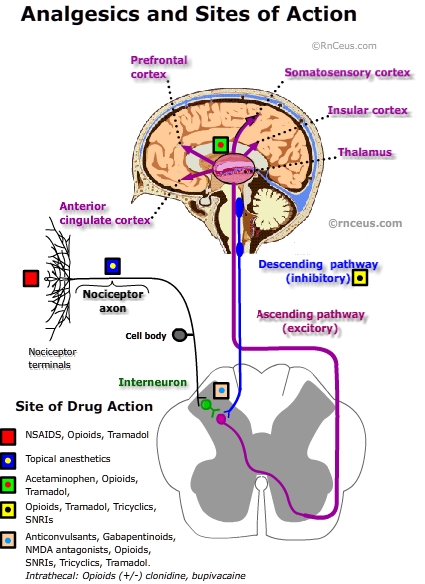 Analgesic drugs can be classified
into three groups:
Analgesic drugs can be classified
into three groups:  Analgesic drugs can be classified
into three groups:
Analgesic drugs can be classified
into three groups:
Nonopioid analgesic drugs include acetaminophen and nonsteroidal anti-inflammatory drugs (NSAIDs). These drugs provide effective analgesia for mild to moderate pain and have become an intergral part of nociceptive and neuropathic pain management. Unfortunately, nonopioid analgesics have a maximum effective dose ceiling and some significant side effects.
Opioids, also known as "narcotics", include natural substances, e.g., morphine, semi-synthetic e.g., hydrocodone and synthetic substances, e.g. fentanyl. Opioids bind to opioid receptors embedded in the neuron membrane, primarily in the CNS and gut.
Brain structures that contain opiate receptors responsible for opiate drug effects can be mapped by positron emission tomography (PET) scan. The human brain has the highest concentrations of mu opiate receptors in the thalamus which is involved in pain processing; intermediate concentrations in the cerebral cortex and basal ganglia which plays an important role in movement and emotions; and lowest levels in the visual cortex.
Activation of opioid receptors modulate nociceptive transmission by:
Coanalgesic medications are drugs that have a primary use other than pain relief, but also help improve analgesia for some painful conditions. Many of these medication provide an "opioid sparing" effect and have become a mainstay in the treatment of neuropathic pain.
© RnCeus.com